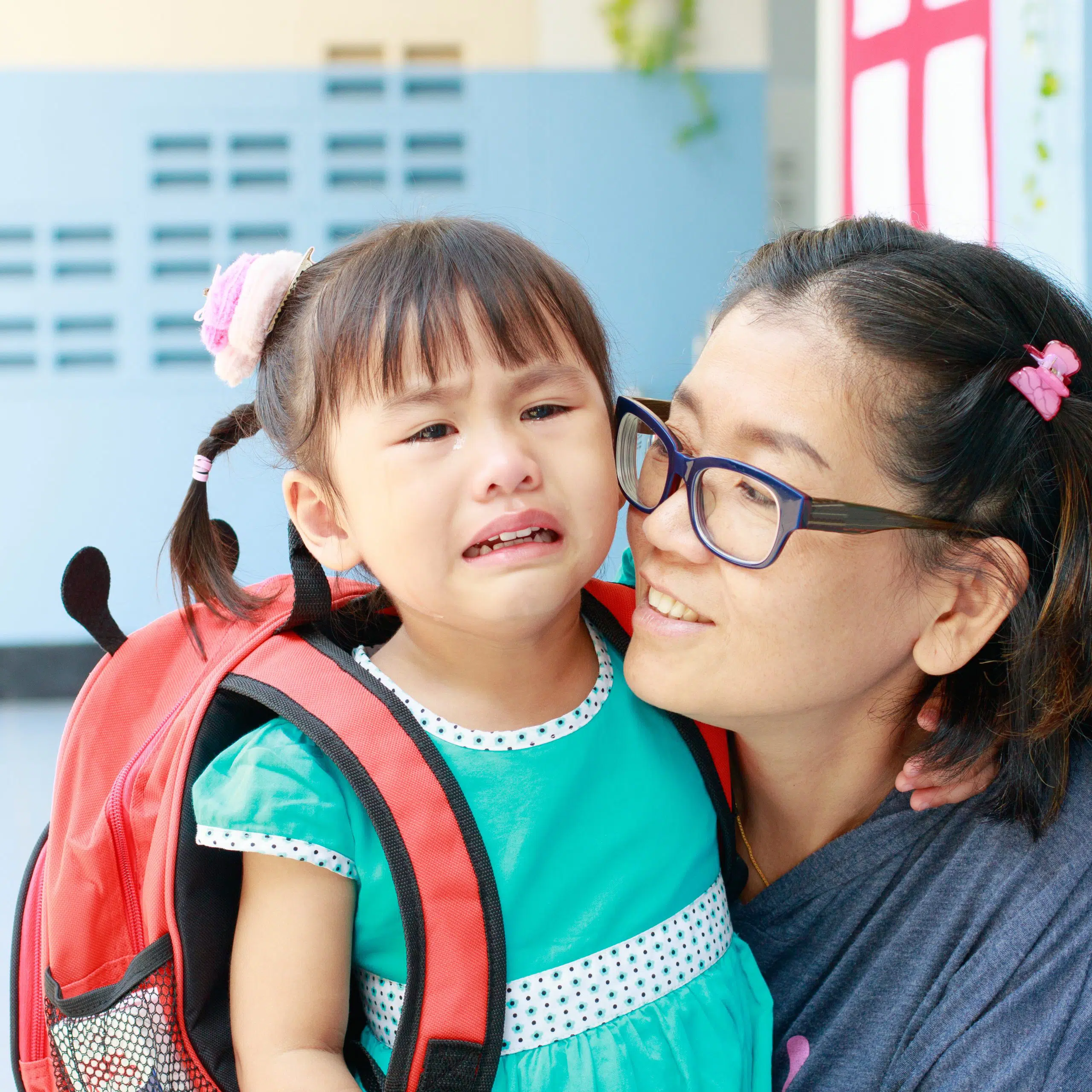Separation anxiety is a normal part of child development. Most young children feel upset when they’re away from their parents or caregivers. The typical behavior might include a toddler clinging to mom’s leg at daycare or crying when left with grandparents. This is completely normal as children develop awareness of being apart from family members.
However, when these feelings become excessive or persist beyond developmentally appropriate ages, it might indicate separation anxiety disorder (SAD). This condition affects about 4% of children and 1.6% of adolescents, making it the most common anxiety disorder in children under 12.
Key Signs of Separation Anxiety Disorder
- Excessive distress when anticipating separation from parents
- Persistent worry about losing a parent (due to illness, accident, or death)
- School refusal because of separation fears
- Extreme fear of being alone
- Refusal to sleep away from home or without a parent nearby
- Nightmares about separation
- Physical symptoms like stomach pain, headaches, or vomiting when away from caregivers
School refusal is particularly common with SAD. Your child might frequently complain of feeling sick on school days, resist going to school, or show temper tantrums before school. This can lead to attendance problems and academic difficulties as they fall behind.
Bedtime can become especially challenging for children with separation anxiety disorder. You might notice your child:
- Needing you present while falling asleep
- Refusing to sleep in their own bed
- Coming into your room during the night
- Having trouble with sleepovers or overnight camps
Separation anxiety in children differs from normal developmental anxiety in its intensity, duration, and impact on daily functioning. While all children experience some anxiety when separated from attachment figures, children with SAD show symptoms that significantly interfere with their social activities, school performance, and family life.
How You Can Help Your Child
-
Provide structure and predictability
- Give advance notice about schedule changes
- Maintain consistent routines when possible
-
Create smooth transitions
- Develop a school drop-off plan with teachers
- Consider arranging a special morning job or early arrival
-
Balance activities
- Avoid overscheduling
- Allow plenty of downtime for play and relaxation
-
Maintain connection
- Leave encouraging notes in their lunch box
- Provide a photo or small object that reminds them of you
-
Build emotional skills
- Acknowledge their feelings without dismissal
- Praise brave behaviors and small steps of progress
- Teach coping skills for managing anxiety
Young children developing object permanence (understanding that objects continue to exist when out of sight) might naturally experience separation anxiety. But when older students show these symptoms, professional help might be needed.
Effective treatments for separation anxiety disorder include:
- Play Therapy
- Family Therapy
- Cognitive Behavioral Therapy (CBT)
- EMDR (Eye Movement Desensitization and Reprocessing)
The earlier you seek help for your child’s separation anxiety, the better the outcomes tend to be. Professional therapists can teach your child valuable coping strategies while helping you understand how to respond effectively to their anxiety.
Children with separation anxiety often struggle with trust and may experience sadness or difficulty concentrating at school. Their fears about separation are real to them, even if they seem excessive to adults. Your patience and understanding will be essential in helping them gradually build confidence in their ability to handle separation.
With proper support, children can learn to manage separation anxiety and develop healthy independence. The goal isn’t to eliminate all anxiety but to help your child function well despite feeling anxious.
Frequently Asked Questions
What are the signs of separation anxiety in children?
Children with separation anxiety may show:
- Excessive distress when apart from parents
- Fear of being alone or away from home
- Physical symptoms (stomachaches, headaches) before separation
- Trouble sleeping alone, nightmares about separation
- Clingy behavior with parents
What is the 3-3-3 rule for anxiety in children?
A simple grounding technique to manage anxiety:
- See: Name 3 things you can see
- Hear: Name 3 things you can hear
- Move: Move 3 parts of your body
This method helps children focus on the present and reduce anxious thoughts.
What is the 3-3-3 rule for anxiety in children?
A simple grounding technique to manage anxiety:
- See: Name 3 things you can see
- Hear: Name 3 things you can hear
- Move: Move 3 parts of your body
This method helps children focus on the present and reduce anxious thoughts.
How does separation anxiety affect a child’s development?
- School: Frequent absences, trouble concentrating
- Social: Avoidance of peer activities, isolation
- Emotional: Increased anxiety, lower confidence
- Physical: Sleep problems, stress-related symptoms
Early intervention can prevent long-term issues.
What causes separation anxiety in children?
- Developmental: Common in toddlers, sensitive temperament
- Environmental: Major life changes, family stress, overprotective parenting
- Biological: Genetic predisposition, differences in stress response
When should parents seek professional help?
Consult a doctor if anxiety:
- Persists beyond age 4
- Interferes with daily life (school, sleep, activities)
- Causes panic attacks or extreme distress
- Leads to isolation or thoughts of self-harm
A pediatrician or child psychologist can recommend the best treatment options.
If you notice these distressing symptoms in your child, seek the help of a therapist who specializes in anxiety disorders. The earlier you can intervene and get professional help, the better. Play Therapy, Family Therapy, Cognitive Behavioral Therapy (CBT) and EMDR therapy are all effective approaches to treating separation anxiety in children.
Our therapists are highly skilled in working with children, adolescents, and families and offer a diverse array of services to meet the needs of you and your family! The majority of our therapists are Level II EMDR trained as well!
Let’s connect! Call us today to schedule an appointment.
940-222-8552 or email [email protected]
Cara Strickland, MS, LMFT, EMDR
Licensed Marriage and Family Therapist
Teen Social Anxiety

